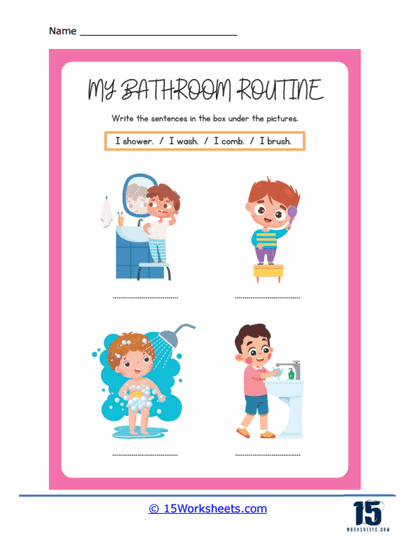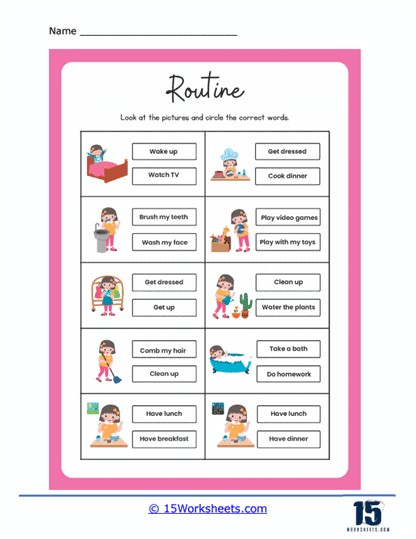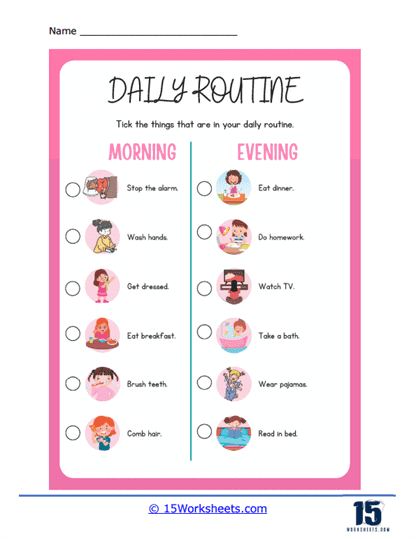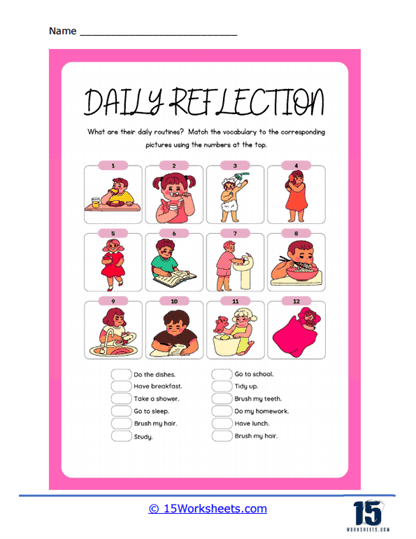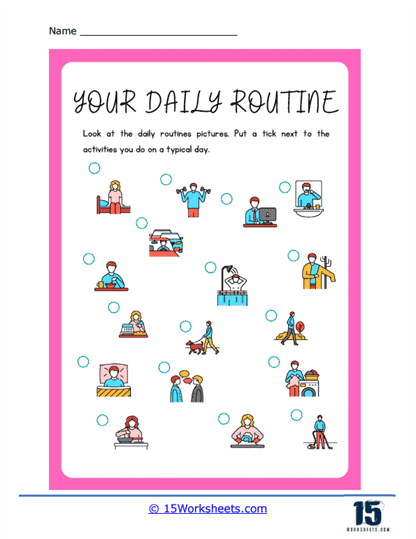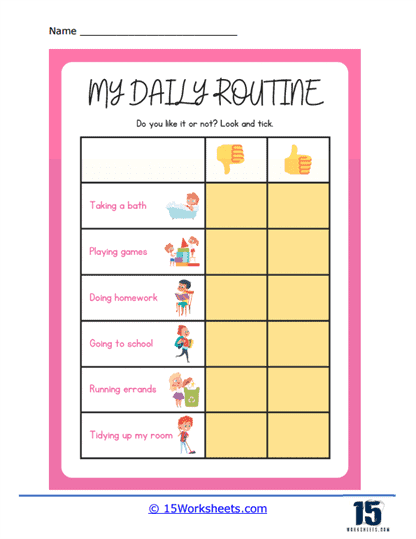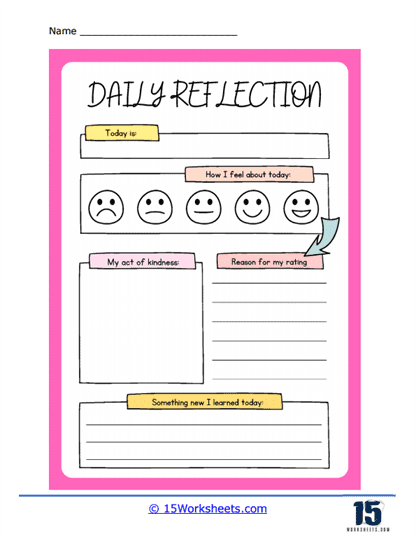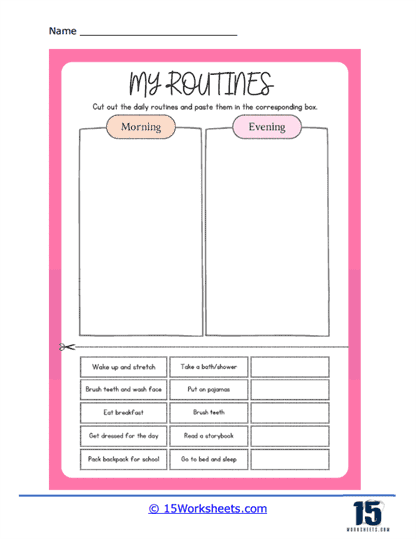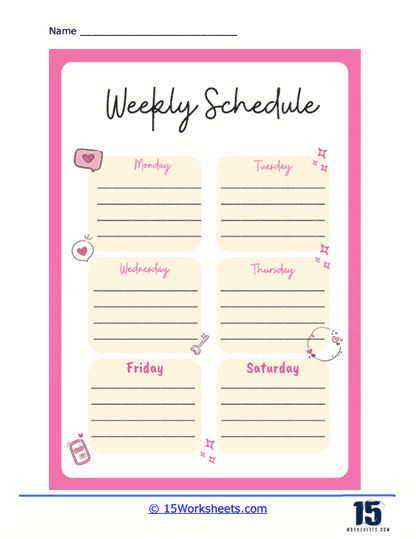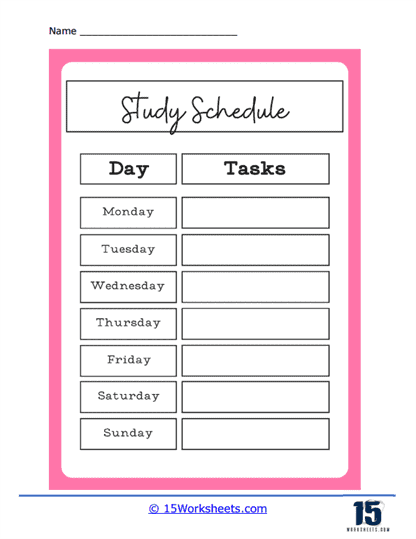Daily Routine Worksheets
About These 15 Worksheets
Daily Routine Worksheets are primarily used for teaching, reinforcing, or assessing a learner’s understanding and grasp of everyday routines and activities. They are frequently used in language learning environments, such as ESL (English as a Second Language) classes, to familiarize students with vocabulary and expressions that describe common daily tasks and occurrences. However, they can also be applied in other contexts such as special education, early childhood education, or in therapeutic settings to help individuals establish routines or understand the concept of time and order of activities.
These are versatile tools that help learners become familiar with everyday activities and their associated vocabulary. They can be tailored for various age groups, proficiency levels, and specific learning objectives, making them a valuable resource in many educational settings.
Types of Exercises and Activities On These Worksheets
Sequencing Activities – This type of exercise requires students to place different tasks in the correct order. For example, a student might be given images of a person waking up, brushing their teeth, eating breakfast, and heading to school. They would then need to number the images in the right order.
Fill-in-the-Blanks – A sentence describing a daily activity might be missing a word or phrase, and students must fill in the missing word. For example – “Every morning, I _____ my teeth before eating breakfast.”
Matching – Students might be given a list of verbs (like ‘brush’, ‘eat’, ‘sleep’) on one side and a list of nouns (like ‘teeth’, ‘breakfast’, ‘bed’) on the other. They would then have to draw lines connecting the correct verb with its corresponding noun.
Multiple Choice Questions – These might test vocabulary or comprehension. For instance – “What do you usually do after dinner? a) Go to bed b) Eat breakfast c) Watch TV.”
Labeling Activities – An image of a room or a person performing several activities could be shown, and students would have to label different items or actions using vocabulary words. Students may be asked to categorize tasks based on the time of day, such as morning, afternoon, or evening routines.
Dialogue Practice – Students might be given partial dialogues or conversational snippets where they discuss their daily routines, and they need to either complete them or practice them with peers. Especially for younger students, they might be asked to draw pictures depicting certain parts of their day.
Time-based Activities – These activities emphasize the concept of time. Students may be asked to match activities to times of day or to allocate how much time they spend on different tasks.
The Benefits of Daily Routines
Learning daily routines is crucial for children, offering a myriad of developmental benefits. Predictable routines create a sense of security, alleviating fears by allowing children to anticipate what comes next in their day. This predictability also introduces them to basic time management and organizational concepts.
The structure derived from routines not only helps children feel more in control but fosters a growing sense of responsibility, especially when routines encompass chores or personal care. As children acclimate to these routines, they begin to display greater independence, undertaking tasks without consistent reminders.
The repetitive nature of routines aids in honing their motor, cognitive, and social skills. These structured patterns of daily life can also aid in smoother transitions between activities and enhance their social and emotional development through interactions with peers or family members. For instance, shared meal times can be instrumental in teaching children essential social cues.
Routines can be pivotal in cultivating healthy lifelong habits, such as hand hygiene before meals or consistent bedtime schedules, leading to better sleep. In the academic sphere, consistent study or reading routines can bolster a child’s academic performance and instill a genuine passion for learning.
In turbulent times, the familiar embrace of a routine provides comfort and stability, ensuring a child’s emotional well-being. In essence, daily routines serve as building blocks for children’s holistic growth, preparing them to navigate life’s challenges with confidence and competence.
How To Help Students Form Daily Routines
Helping students establish daily routines is instrumental in cultivating their discipline, independence, and overall success. To start, it’s pivotal to explain the profound impact of routines on productivity, stress reduction, and effective time management.
Instead of dictating a set pattern, involve students in the planning process, ensuring they feel invested in the routine. Begin with uncomplicated steps, and as they grow accustomed, evolve the routine. The incorporation of visual tools, like calendars or planners, can further streamline this process.
Consistency should be emphasized, but it’s equally vital to ensure that students’ routines contain scheduled breaks to prevent burnout. Periodic reviews of these routines are necessary, tweaking them based on what works best for the student. As guides, it’s crucial for adults to model routine adherence themselves, setting a standard for students.
Celebrating even minor milestones in routine adherence can serve as motivation. Time management goes hand in hand with establishing routines, so introducing tools like timers can be beneficial. Encourage students to introspect about their daily routines, pinpointing what’s effective and what might need change.
It’s paramount to create a conducive environment for these routines, ensuring minimal distractions and a supportive atmosphere. And remember, patience is essential. Every student will have days where routines go awry, but with understanding and guidance, they can recalibrate and stay on course.
Over time, these consistent routines will become second nature, preparing students for future challenges.




